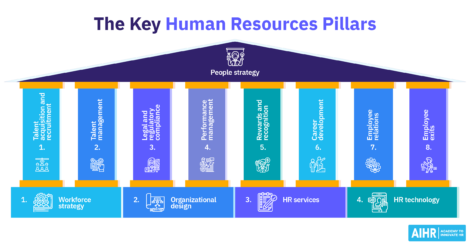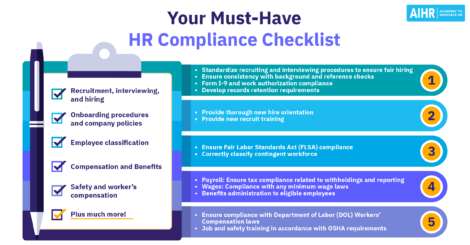9 Talent Management Metrics You Need to Use

Talent management metrics are tools to measure the inflow, throughflow, and outflow of talent in your organization. This article will explain the use of talent management metrics and why they should be tracked by any HR department.
This article is part of a four-part series, which also includes an article about the talent management dashboard. This dashboard is often used to keep track of the most important talent management metrics.
What is talent?
Before we list the talent management metrics, it’s important to define what ‘talent’ is. This differs per organization.
Some organizations qualify their entire workforce as ‘talent’ while in others only a select group qualifies as such. This is an important distinction because when everyone qualifies as a talent, there’s no difference between your talent management metrics and your workforce metrics.
In this article, we’ll focus on a specific group of employees who are regarded as being both high potentials (HiPos) and moderate to high performers. These are the employees in whom the company has invested disproportionally in terms of training. They’re also the ones who are oftentimes a crucial part of the organization’s succession planning as they are its future leaders.
Talent management metrics examples
1. Talent mobility
Talent mobility is a metric that keeps track of the mobility of employees. Mobility can be both internal and external (see number 2). Internal mobility is desirable to prevent external mobility.
In the last 10 years, traineeships have become very popular. A fair part of the attraction is that highly educated young professionals can try different roles in a relatively short time span. Internal mobility chances are often a requirement to retain people who are constantly looking for new challenges.
The best way to measure talent mobility is average assignment duration.
2. Talent turnover
Turnover in your talent pool is per definition unwanted. Talents are people who have a high future potential. These are the people that you want to educate and train so they can be even more valuable for the organization in the future.
Turnover is, therefore, a good measure to track. It can be measured using the simple turnover percentage, or the percentage changes over time.
3. Talent distribution
Talent distribution is another insight that you want to keep track of. This can be very simple, using demographic variables like age, nationality, gender and so on. Having an overview of the talent distribution helps you to devise better talent strategies. For example, if the average age of talent is increasing, you may want to refocus your recruitment efforts.
4. High-potential talent
Another important talent management metric example is to know what percentage of the workforce qualifies as talent. Some organizations cap the percentage of talent at a fixed number. This may make sense as it forces you to only select the top employees as your HiPos.

5. Cost to hire
The more traditional recruitment metrics can easily be applied to your talent pool. Cost to hire is an excellent example. It measures the total cost of hiring someone, including ad placement, sourcing costs, the invested time from manager and recruiter, et cetera.
In case multiple people are interviewed but only one of them is hired, make sure to include all their costs in this metric.
6. Time to hire
Time to hire is another recruitment metric example. It is usually measured as the number of days from the moment the vacancy opened up until the new hire signed his or her contract.
A common cause of a long time to hire is a delay in approval from the manager. Oftentimes the manager needs to list the job requirements, approve selected CVs and plan interviews. Delays in this process sometimes double the time to hire!
7. Time to full productivity per FTE
A third recruitment metric is the time to full productivity. Every new hire needs a few months to become fully productive. During these months, new employees learn the ropes, get to know their colleagues and develop a high-quality network that enables them to do the job well. Depending on the effectiveness of the organization’s onboarding (and inboarding) activities, this time can be lengthened or shortened.
Related: Inboarding, the forgotten brother of onboarding
8. Training spend
The time and money spent on training activities are important talent management metrics. Talents are people with a high growth potential. Enabling this growth through learning and development activities is a requirement for any effective talent management process.
Training spend can be defined as the number of days in training or the amount of dollars invested in training. These metrics can be tricky because internal training costs are not always measured consistently while external training costs are usually much higher.
9. Exit interviews
A final metric that you need to keep track of is exit interviews. You will want to know why your talent is leaving. Always. Knowing the common causes of employee turnover helps to prevent further damage.
Standardized exit interviews are, however, quite rare. These interviews often provide qualitative information that gives valuable input – but technically they’re no metrics. In order to standardize this, you can work with questionnaires or standardized interviews. An additional benefit is that doing so will provide more reliable data.
A note of caution on talent management metrics
So there you have it, 9 talent management metrics you probably need to use. A final word of caution, however: are you looking for talent management metrics or normal HR metrics?
HR metrics can be categorized into multiple fields: recruitment, learning and development, demographics, et cetera. In terms of talent metrics, it’s good to differentiate on all these metrics between ‘normal’ employees and your ‘High Potentials’. Because your real talent metrics are the differences between those two groups. You want your talent to always overperform and if this isn’t the case, you may want to reconsider your definition of talent.
Weekly update
Stay up-to-date with the latest news, trends, and resources in HR
Learn more
Related articles
Are you ready for the future of HR?
Learn modern and relevant HR skills, online











